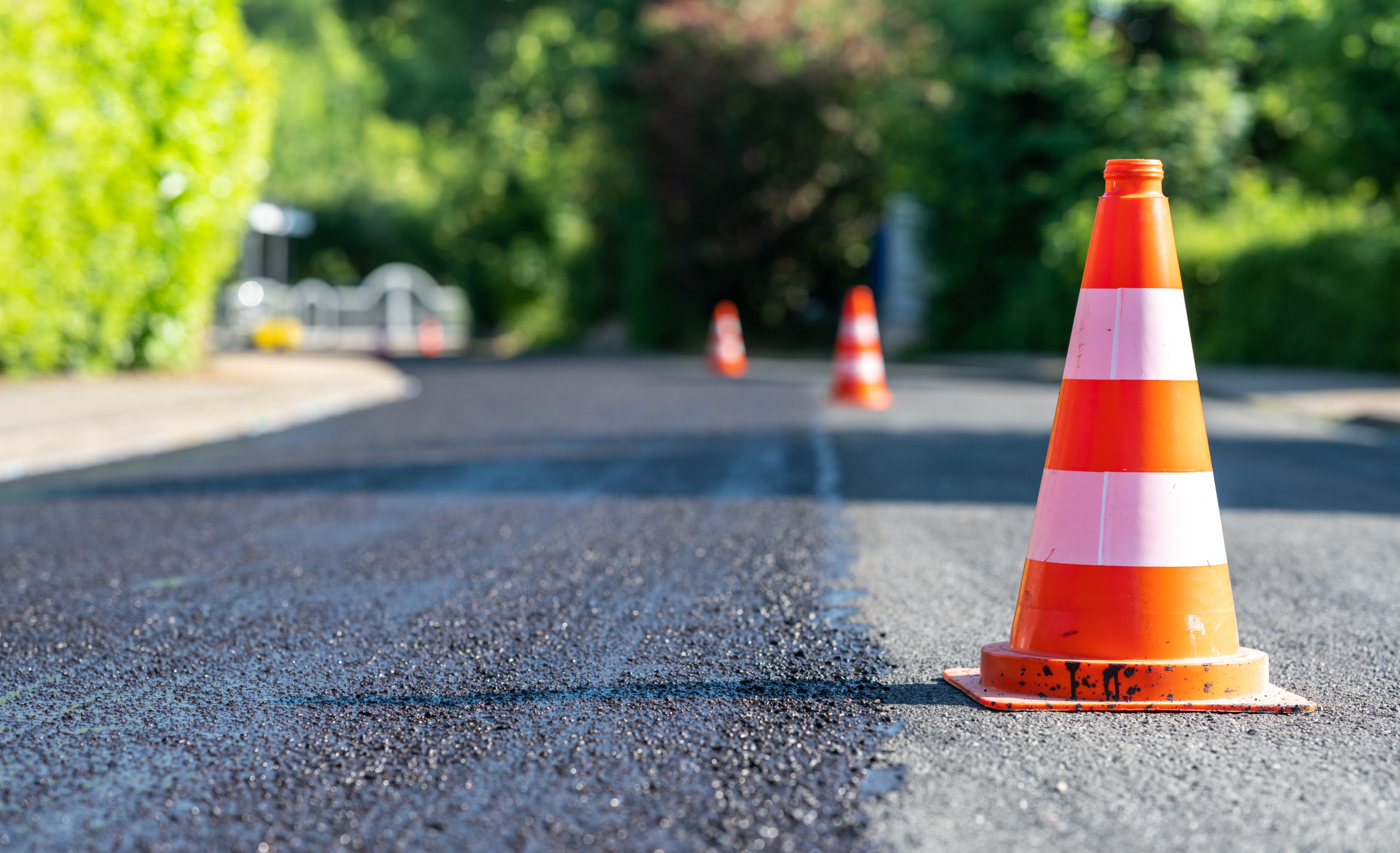After years of use and abuse, asphalt surfaces (highways, driveways, parking lots, roads, etc.) tend to need resurfacing. Bringing asphalt back to life and creating a fresh-faced, smooth road for easy use is the goal of milling and overlay projects. It’s just one way of repairing asphalt. Let’s get into it!
What Happens In a Milling and Overlay Project
As you likely have figured out, milling and overlay involve two big pieces. The first milling, the second overlay. The overlay, of course, has a couple more steps in it but let’s not get too bogged down by details.
Step 1
First, the milling. The old asphalt surface is milled off, usually between a half inch and two inches, to tear down the top layer of the surface equally. These pieces, also known as ‘millings,’ can then be taken off to a nearby asphalt plant for recycling into new asphalt. The surface is then swept and cleaned, clearing any loose debris away from the worksite.
Step 2
Next up, an application of tack oil. Tack oil’s whole job is to help bind (or ‘tack’) the new asphalt to the existing asphalt surface. It’s a crucial step as without it, the next layer of hot mix asphalt won’t bind correctly and can break apart, crumble, and leave the surface worse off than it was.
Step 3
Alright, third, overlay time. This is where we bring in the hot mix asphalt to lay over the existing asphalt surface. Using our equipment, we’ll bring in asphalt, lay it out evenly and compact it using rollers to ensure the proper density and smooth finish expected on a new stretch of road.
And there you have it! A brand new looking (and feeling) road or parking lot without all the fuss.
The Advantages of Mill and Overlay
So when would you choose to use a mill and overlay option? What does doing it this way get you compared to other asphalt repair methods? Glad you asked!
Cheaper Solution
As evidenced by the process we just went over, milling and overlay is a rather cost-effective method of repairing asphalt. With only needing a top layer of fresh asphalt, you need less material, and less work to get it to where you need it. It’s also faster than tearing up old asphalt entirely and working the foundation and asphalt layers on top of that. Saves time and money, what’s not to love!
Great For Large Stretches
If you’re in control of a large area of asphalt, being able to keep all of them up to date and maintained can be difficult. Using the more cost-effective method of milling and overlaying at regular intervals can allow you to maintain more roadways than if you were tearing them down and rebuilding from scratch, obviously.
Preventative Maintenance
Not all asphalt repairs need to be so comprehensive if you catch the damage early! Often if you repair surface-level imperfections sooner rather than later you’ll prevent minor cracks from turning into potholes that disrupt the subsurface and foundation levels of the asphalt. Some folks like to do a regular mill and overlay every few years to keep the surface as smooth as possible! Who are we to judge?
Have more questions about mill and overlay work? Have an asphalt repair job that needs professional attention? Look no further. Here at Sunrise Asphalt, we’ve been paving the way for Tucson for over 40 years!
Give us a call or fill out our form for a free estimate on your asphalt job.
No matter the job, the owner is always on site – guaranteeing the highest quality work!




